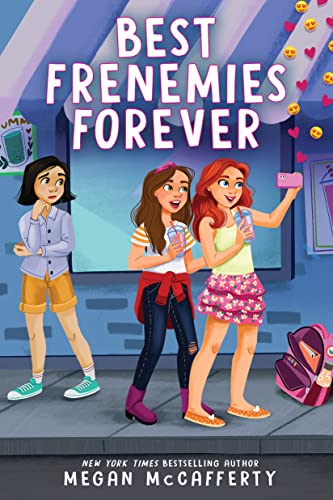Megan McCafferty’s “Best Frenemies Forever” delves into the messy, relatable world of middle school friendships through the eyes of Sophie, a science-minded seventh grader grappling with loneliness after her lifelong friend Ella abandons her for a popular clique. When upbeat new neighbor Kaytee arrives, Sophie hides her social struggles by fabricating a glamorous social life; a lie that unravels when Kaytee transfers to her school. Set against suburban middle school dynamics, the story explores authenticity, self-worth, and the fallout of deception with humor and heart. Sophie’s voice is equal parts witty and vulnerable, and captures the angst of navigating cliques, parental expectations, and the pressure to fit in. While primarily targeting ages 10–14, its brisk pacing and contemporary conflicts (like social media snark and locker-room gossip) will resonate with younger teens.
The book’s accessibility shines through its straightforward prose and relatable scenarios. Short chapters, clear dialogue, and modern slang (“holla,” “hot take”) mirror real teen conversations, easing comprehension for English learners. The plot avoids dense metaphors or cultural references, relying instead on universal themes of betrayal and self-discovery. For reluctant readers, the escalating stakes of Sophie’s lies and Kaytee’s secrets maintain momentum without overwhelming complexity. Classroom applications abound: teachers might use Sophie’s journal-like reflections to discuss character motivation or analyze how peer interactions drive the plot. The honest portrayal of tween social hierarchies makes “Best Frenemies Forever” a pragmatic choice for libraries seeking realistic, low-barrier fiction that validates the emotional rollercoaster of early adolescence.

